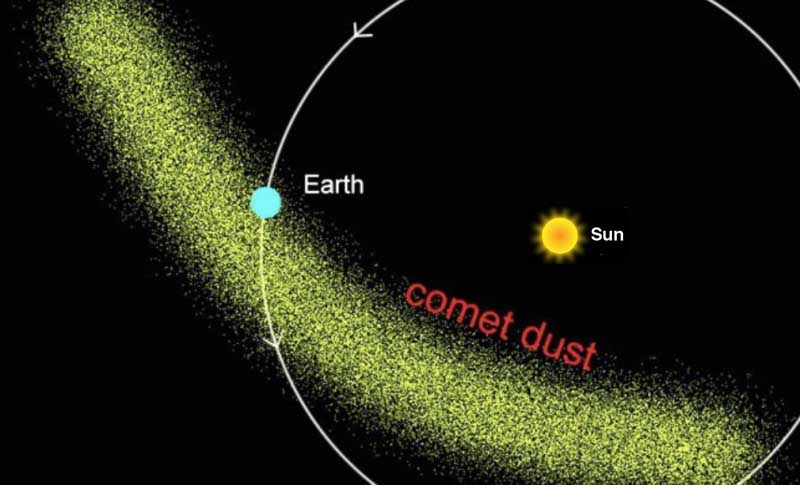Sky Report: August 9 – August 15

This week is the peak of the famous Perseid Meteor Shower and this Sky Report is devoted to it. The planets are pretty much where they were last week.
Meteors are quick flashes of light that last for only seconds. The brightest leave smoke trails that can linger for minutes or longer. They fall at the rate of roughly six an hour and a bit higher in the summer.
A meteor is the glow produced when a particle from outer space enters our atmosphere at speeds so great that friction with the air heats it to 3,000° and quickly burns it up. A faint meteor is produced by something the size of a grain of sand while a particle the size of a pea produces a bright meteor. Perseid meteors travel 200 times faster than a jet airplane and most burn up at heights of 50 miles. How can something so tiny be visible from so far away? Visualize an arc-welders light and recall that even the brightest stars are not all that bright.
Perseid Meteors are dust shed from a comet long ago. Think of a comet as a dirty snowball a few miles across traveling on an elliptical orbit that takes it briefly near the sun, where it thaws and the dust drifts away. That dust loosely follows the orbit of the comet, but through the centuries it drifts away until it forms a huge swarm millions of miles wide, denser at the center. Each time the comet passes the sun it releases more dust.
If the orbit of the comet takes it near the earth’s orbit, we plow through that dust once a year, and depending on the width and density of the swarm we see a meteor shower that lasts days or up to a month. The shower peaks when we move through the densest part.
Perseid Meteors come from Comet Swift-Tuttle and we pass through its swarm from late July through late August with the peak on the morning of August 12th (look on the night of August 11th). Meteors radiate from the direction of the constellation Perseus which is in the northeast, but appear all over the sky. More fall after midnight. Expect to see up to 30 an hour and fewer on the two nights before and after. Dress warmly, and enjoy the free show.
Google “Perseid Meteors” for more information.
Under a grant from the Utah Governor’s Office of Economic Development and the Kane County Office of Tourism, Stellar Vista Observatory offers portable telescopes and tripod mounted binocular kits on loan for free to all residents of Kane County. Nothing beats a quality binocular or astronomical telescope to enhance enjoyment of the night sky! Visit https://stellarvistaobservatory.org/discover-the-night-sky/ for full details.
The Sky Report is presented as a public service by the Stellar Vista Observatory, a nonprofit organization based in Kanab, Utah, which provides opportunities for people to observe, appreciate, and comprehend our starry night sky. Additional information is at www.stellarvistaobservatory.org. Send questions and comments to
John@StargazingAdventures.org.






Comments are closed.